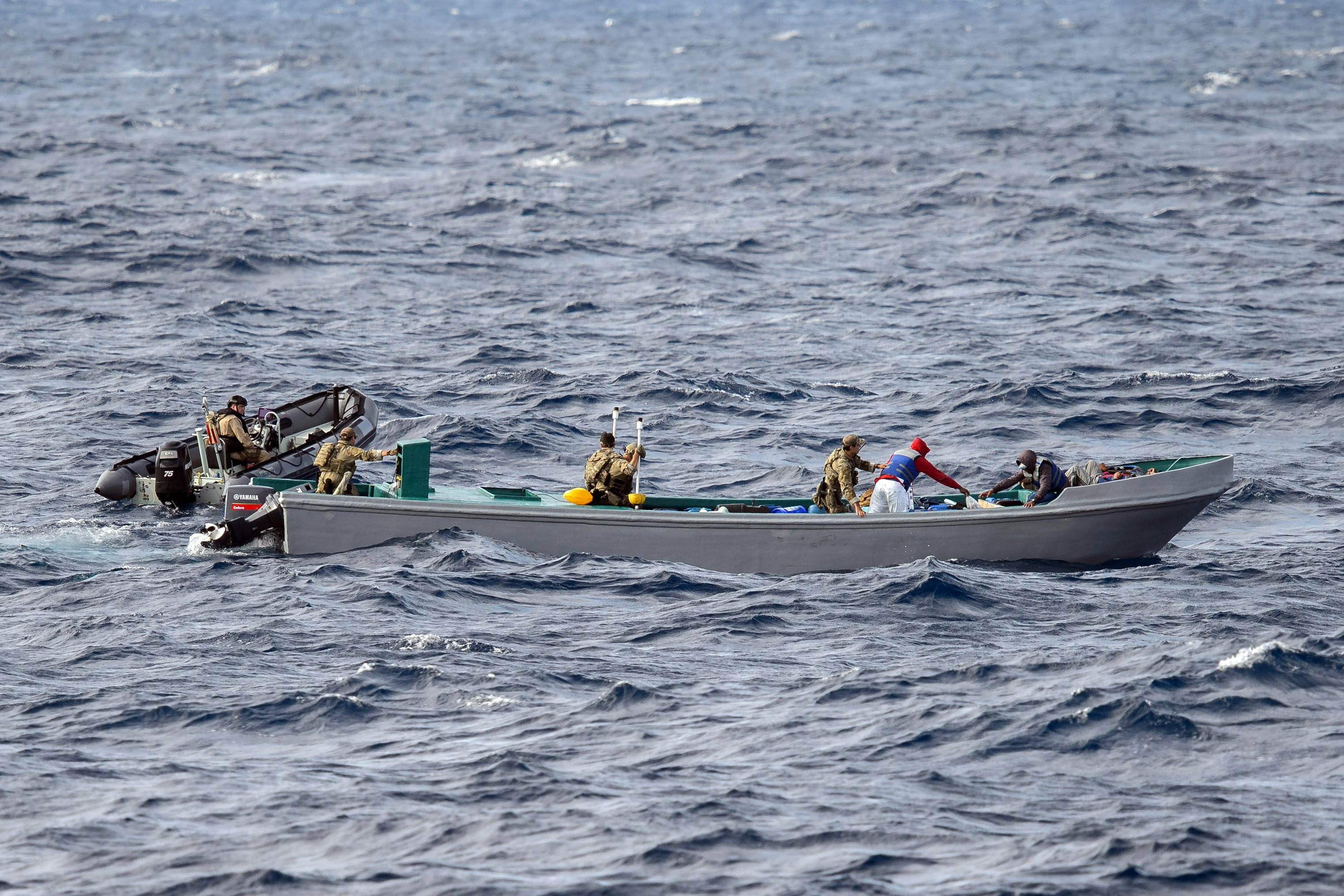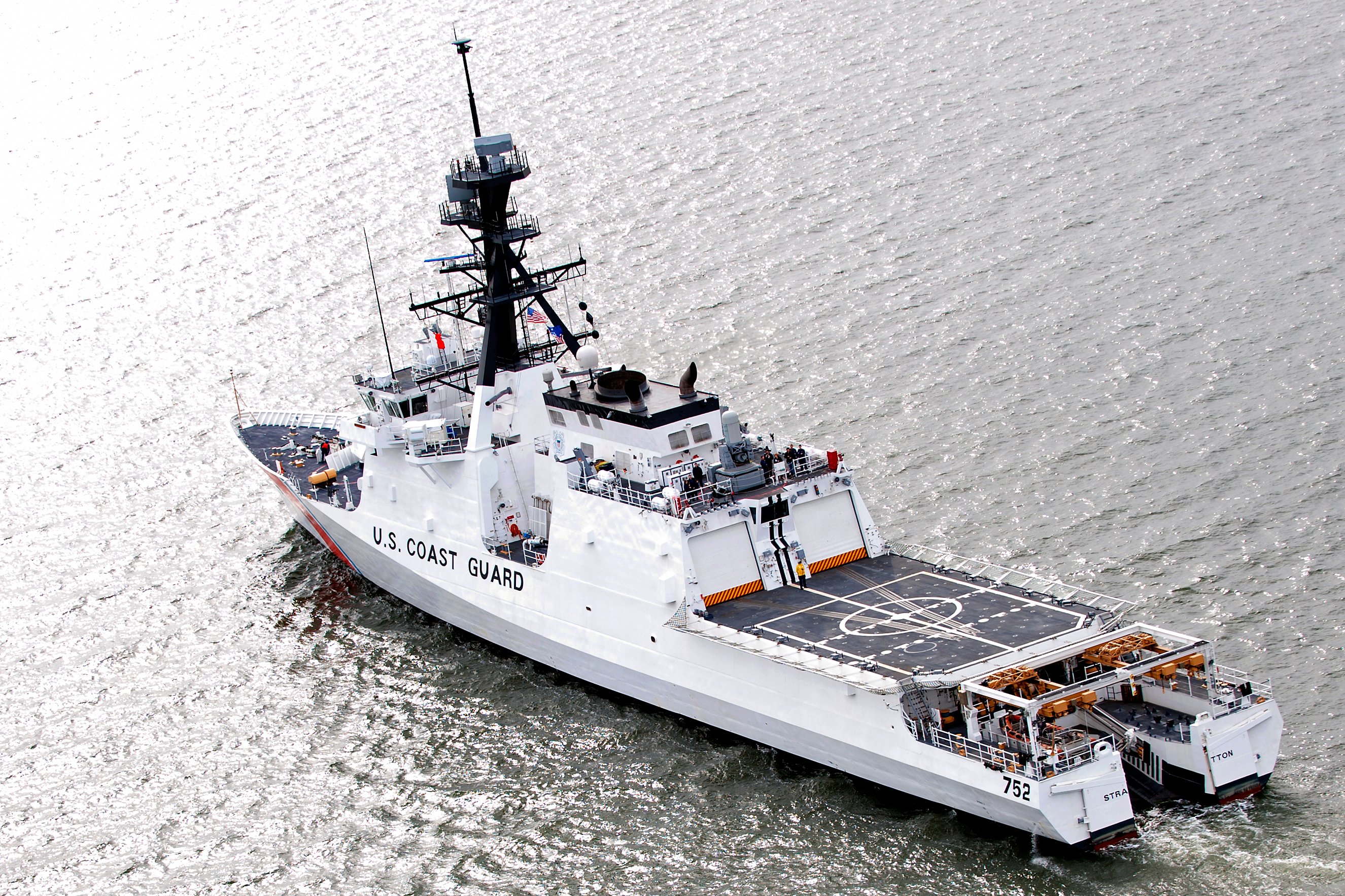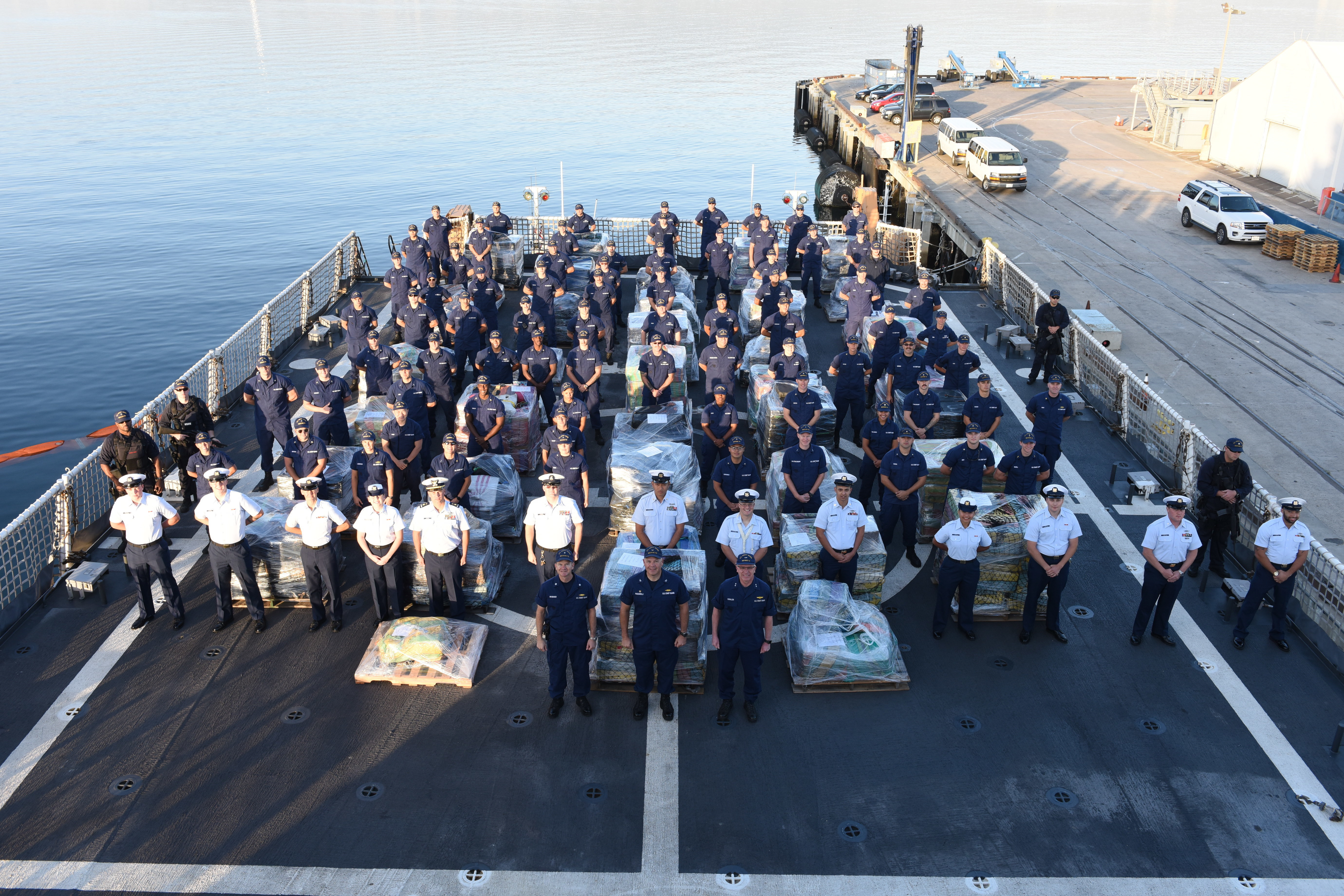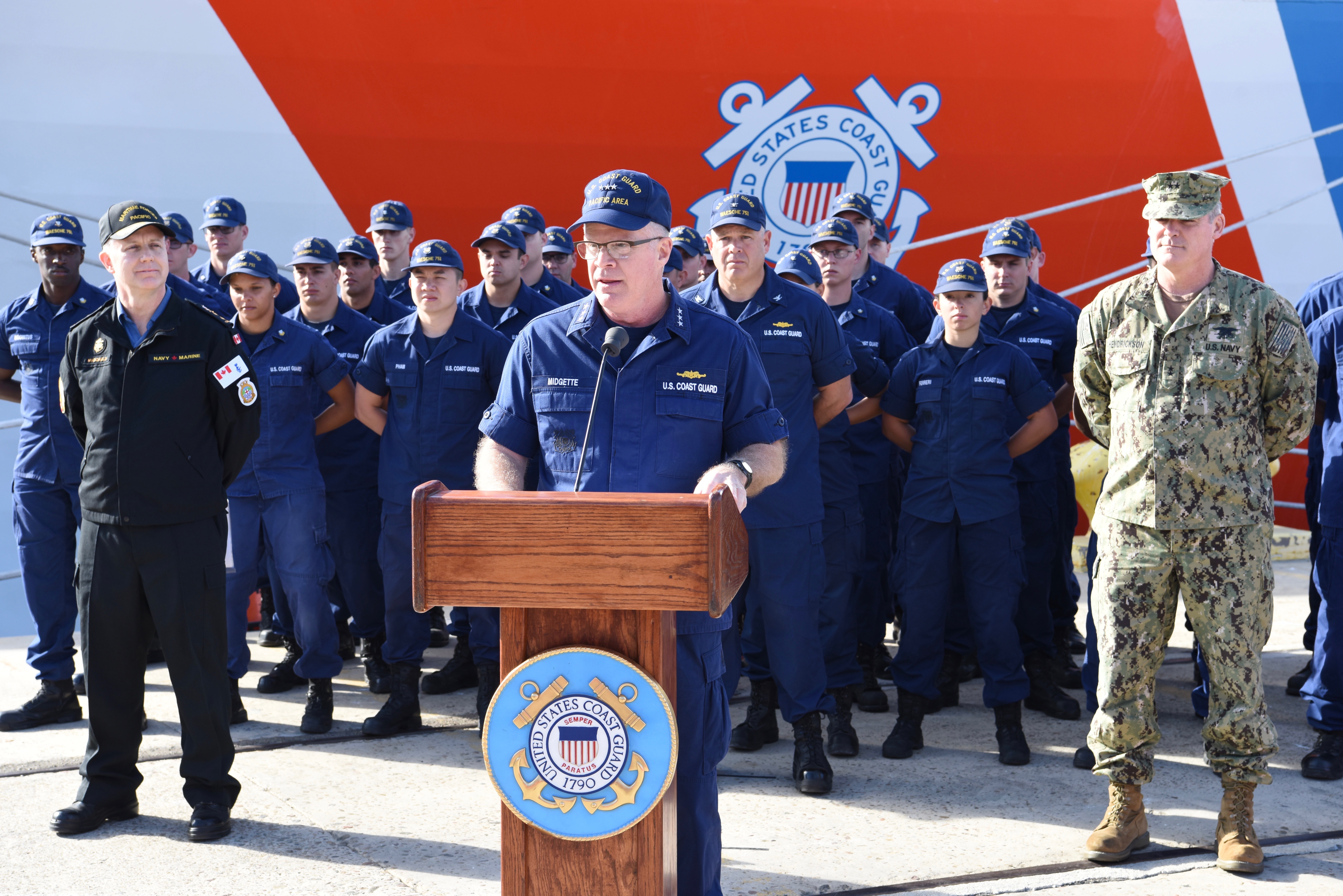
SAN DIEGO, Calif. — The pallets stacked with plastic-wrapped bricks of cocaine, unloaded by the crew of the cutter USCGC Stratton (WMSL-752) on Thursday, represented just some of the more than 47,000 pounds intercepted in the eastern Pacific just in recent months, according to federal officials. The estimated street value: $721 million.
The cocaine stash was collected during 23 separate interdictions by U.S. and Canadian forces during operations off Central America and South America, Coast Guard Pacific Area officials announced. The counter-drug operations are part of the continuing mission to stop the flow of illegal drugs into the United States from drug-producing regions to the south, officials said on Thursday.
While the Coast Guard is seeing record-breaking interdictions at sea, recent counter-drug operations reveal a new tactic and trend in how drug cartels are transporting the drugs close to shore. Since June, law enforcement teams and vessels have captured 13 stealthy, “low-profile” fast boats that officials said are designed to evade radar and the eyes of Coast Guard and law enforcement teams.
“These drugs will not make it to the Main Streets of America, which is a victory in one sense,” Vice Adm. Fred Midgette, the Coast Guard’s Pacific Area commander, said at a Thursday press conference.
“Yet as we view that threat through a wider lens, we see that the scourge of drugs remains a challenge to our nations, and in fact all nations across the globe, and especially here in the Western Hemisphere.”

The Coast Guard turned over the drugs to U.S. officials for additional investigation and likely prosecutions, several of which are already taking place in San Diego.
Photographs and video of at-sea interdictions released by officials show slim boats with multiple engines and painted in muted greens, purportedly to blend in better at sea. In one incident, Stratton’s crew nabbed a low-slung, cigarette-shaped boat in international waters on Dec. 30, along with more than 3,400 pounds of cocaine and four suspected smugglers.
Over a three-day period, crew members of the Alameda, Calif.-based Stratton stopped two such boats packed with $78-million worth of cocaine, according to the Coast Guard Pacific Area officials. That was among more than 12,000 pounds of cocaine, valued at more than $165 million, they interdicted from five suspected drug-smuggling vessels over a two-month period.
In another at-sea intercept, a Coast Guard law enforcement detachment (LEDET) deployed on the Esquimalt, British Colombia-based Canadian ship HMCS Nanaimo (MM-702) chased down a suspected smuggling vessel with the help of patrol aircraft. That Oct. 30 mission led to the arrests of three men and seizure of about 1,000 pounds of cocaine before the vessel sank at sea, according to the Canadian military. In a Nov. 21 intercept, the combined Canada-U.S. crew seized more than 3,300 pounds of cocaine, worth more than $44 million, from another go-fast boat in international waters off Central America, the Coast Guard said. In all, the team seized 4,385 pounds of cocaine worth more than $58 million.

The cocaine stash turned over on Thursday includes narcotics interdicted by other Coast Guard cutter crews: 12,000 pounds of cocaine by Astoria, Ore.-based USCGC Steadfast (WMEC-623); 10,300 pounds by Portsmouth, Va.-based USCGC Northland (WMEC-904); 6,700 pounds by Key West, Fla.-based USCGC Mohawk (WMEC-913); and 3,100 pounds by the USCGC Thetis (WMEC 910), also based in Key West.
The stealthy vessels mark a continuing hide-and-seek tactic by drug cartels, which have used autonomous submersibles and drones, as well as high-speed pangas, to move illegal drugs and other products including weapons and cash, officials say. Along with the 13 stealthy boats, Coast Guard vessels and law enforcement teams at sea intercepted two “self-propelled” submersibles.
The interdictions at sea reflect the continuing and growing threats from smuggling operations by drug cartels and other transnational criminal organizations, or TCOs, as detailed in the Department of Homeland Security’s annual “National Drug Threat Assessment” released in October.

“The threat of transnational organized crime is a danger no one ship, agency, country or person can address alone,” Midgette said in a news release.
“We stand alongside our interagency and international partners resolved in a shared purpose to protect those harmed by these dangerous drugs and bring the criminals who smuggle them to justice.”
On Thursday, Stratton‘s crew also had a Scan Eagle unmanned aerial vehicle on display. The Coast Guard is using the drone to extend the reach of its seagoing forces and locate those low-profile vessels.
According to the Coast Guard Pacific Area, drug cartels and their networks “smuggle more than 97 percent of cocaine bound for the U.S. and Canada via some kind of illicit maritime conveyance in the first stage of movement from the source zone. The drugs are smuggled in large quantities from source countries in South America to transshipment points in Central America and southern Mexico. The cocaine is then broken down into smaller loads for secondary and tertiary transits to smuggle across the U.S. Southern Border.”
U.S. and Canadian forces are among agencies in 19 countries working with U.S. Southern Command’s Joint Interagency Task Force South, or JIATFS.





